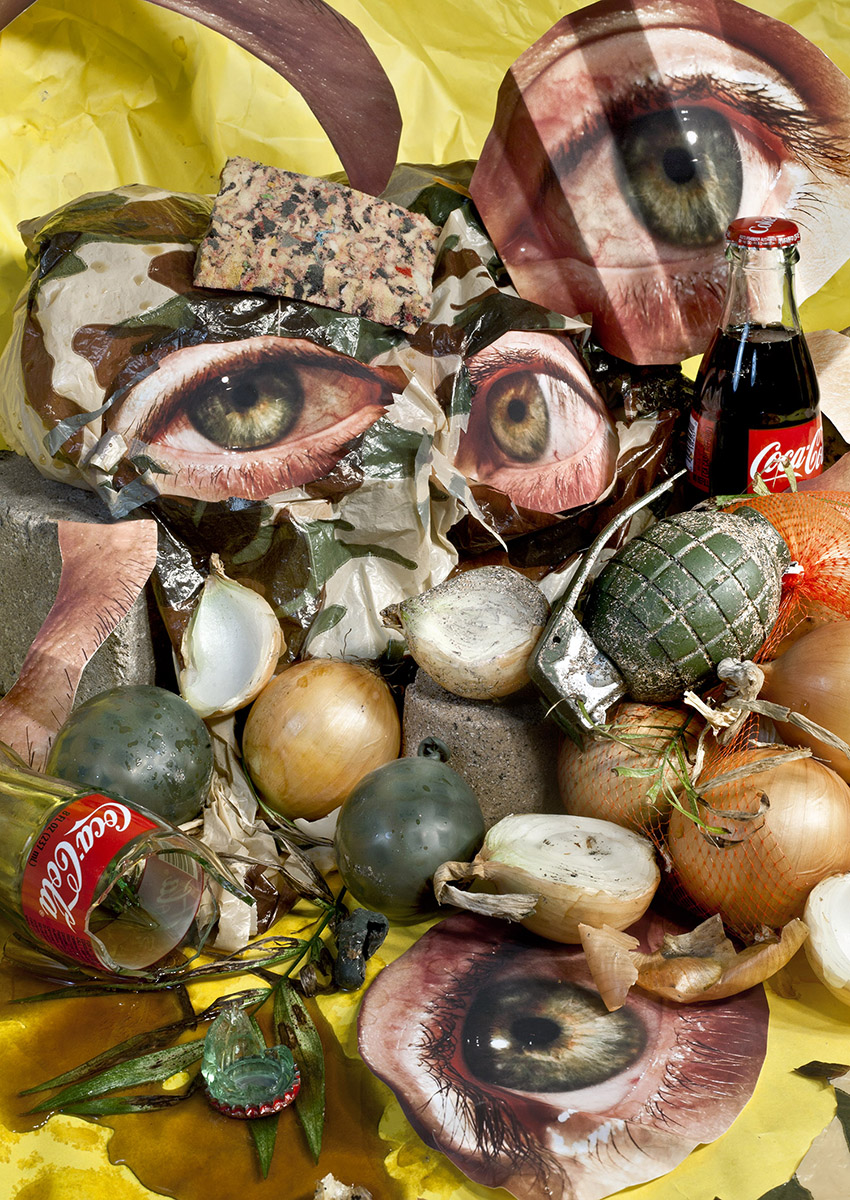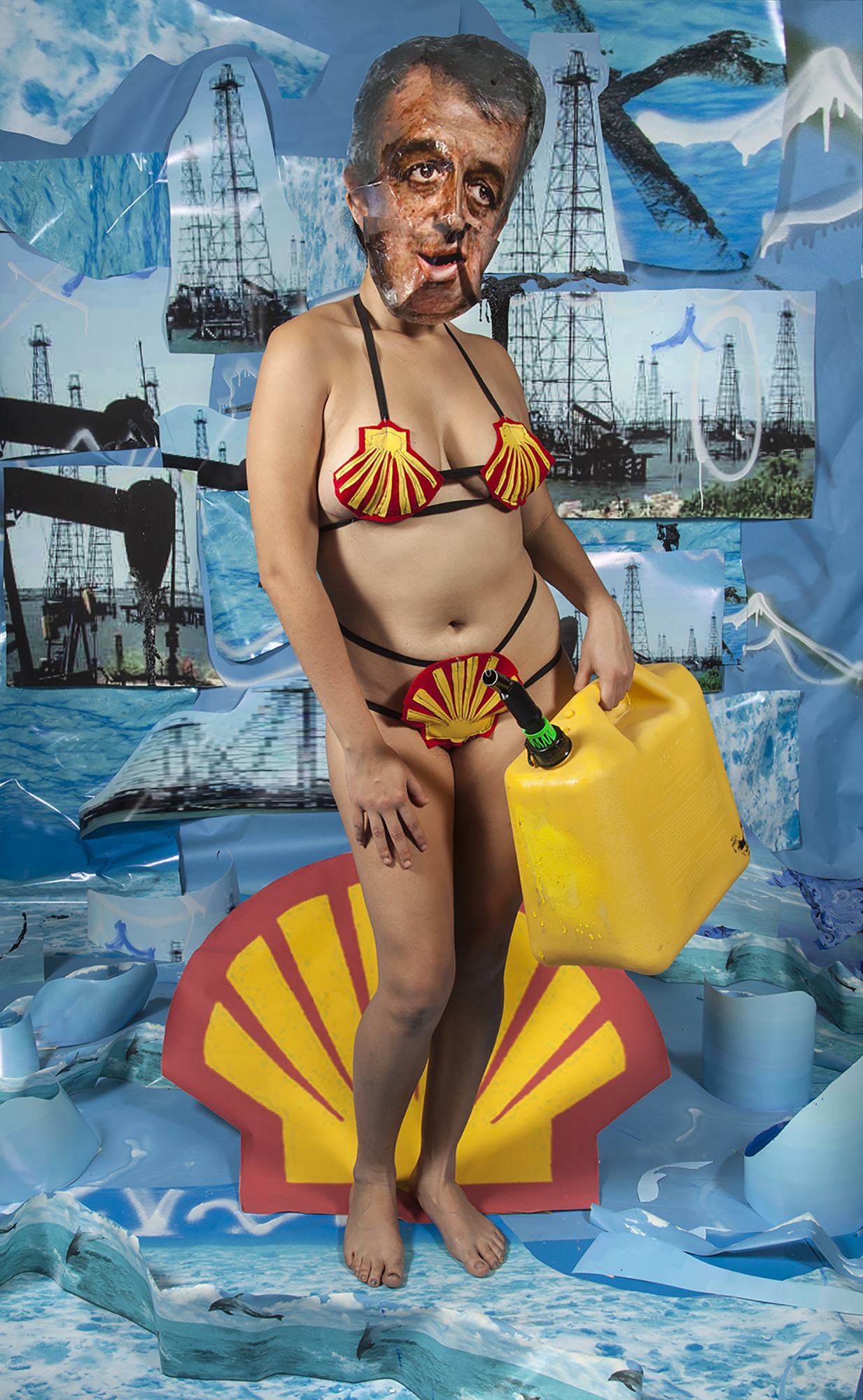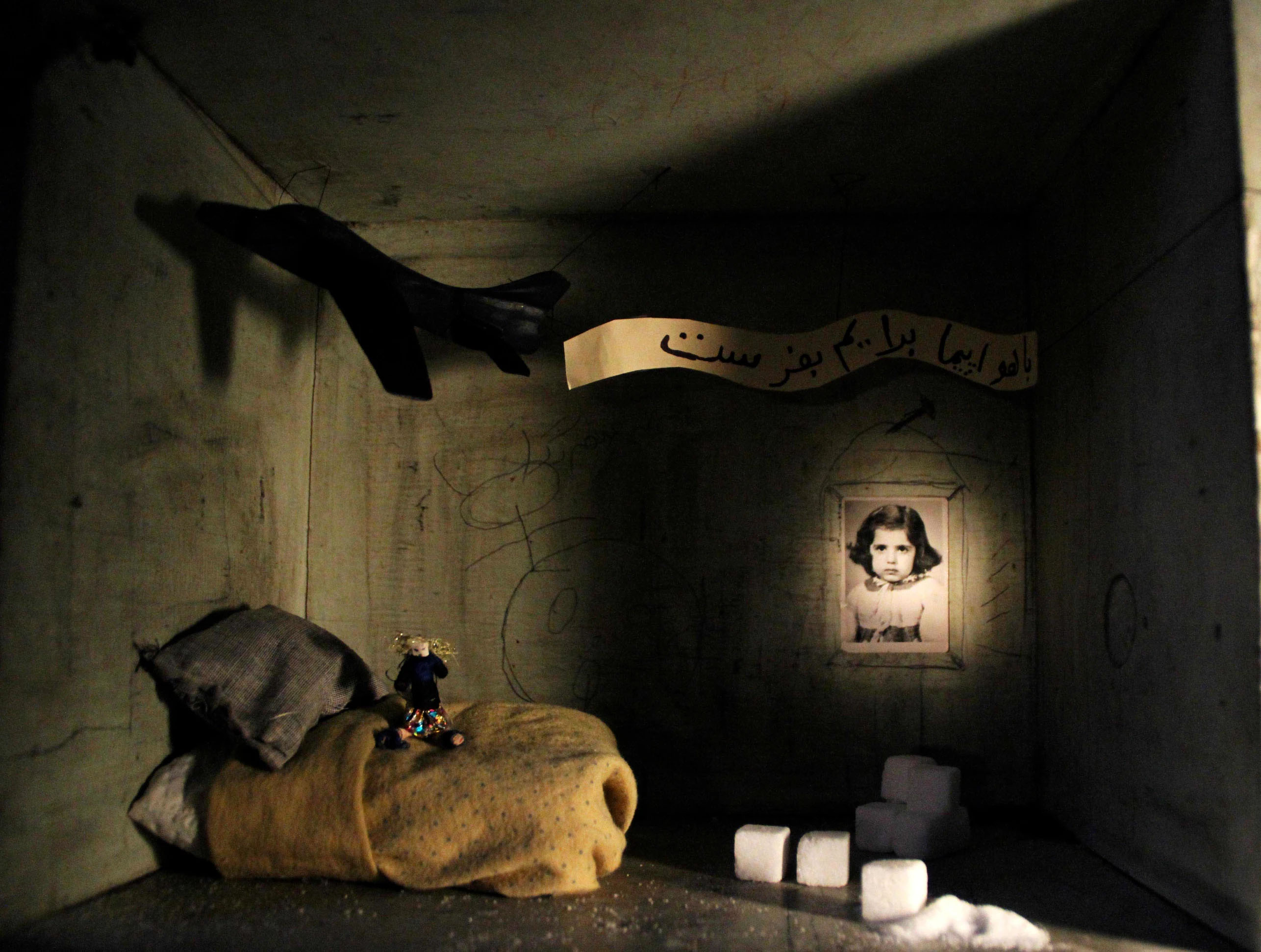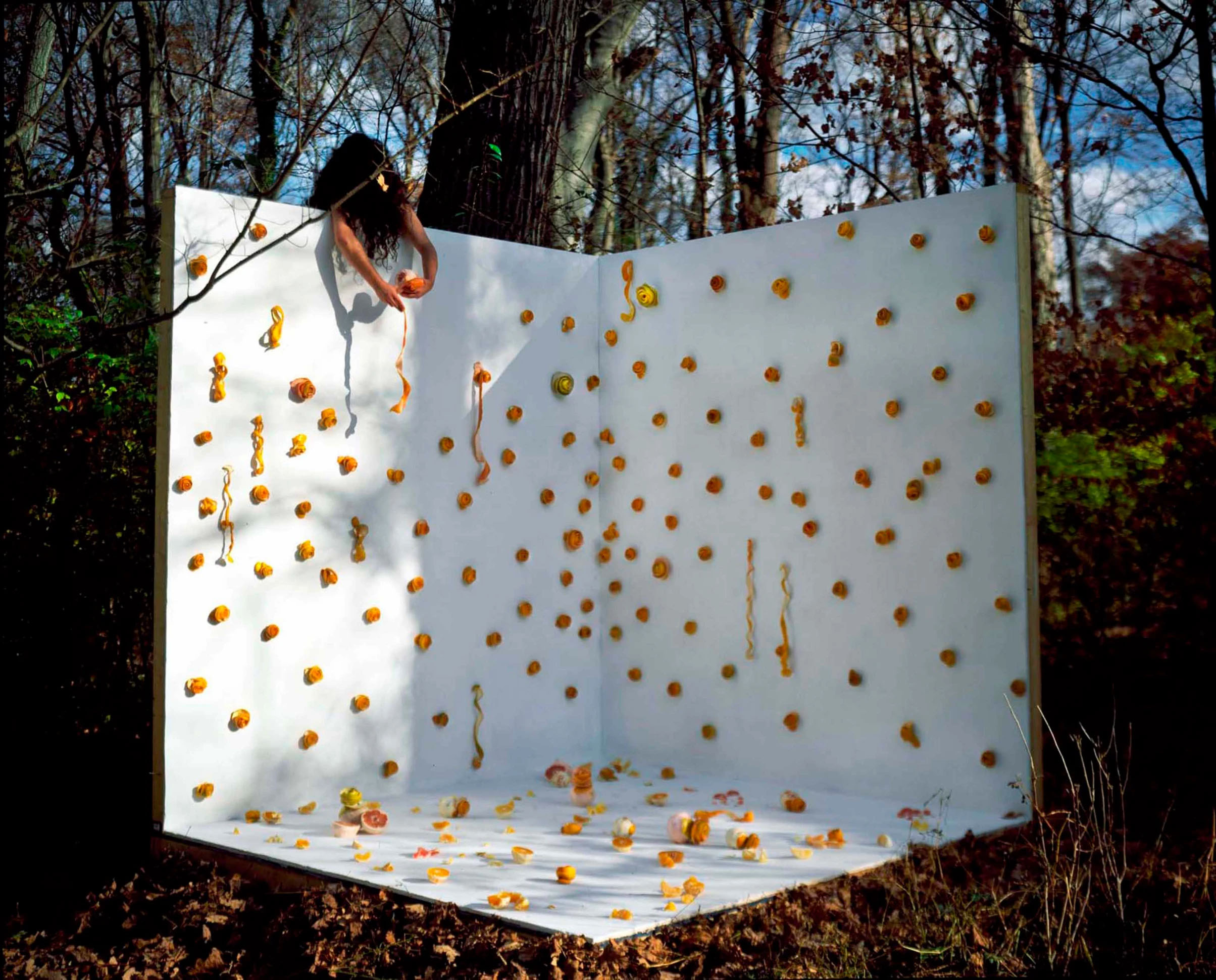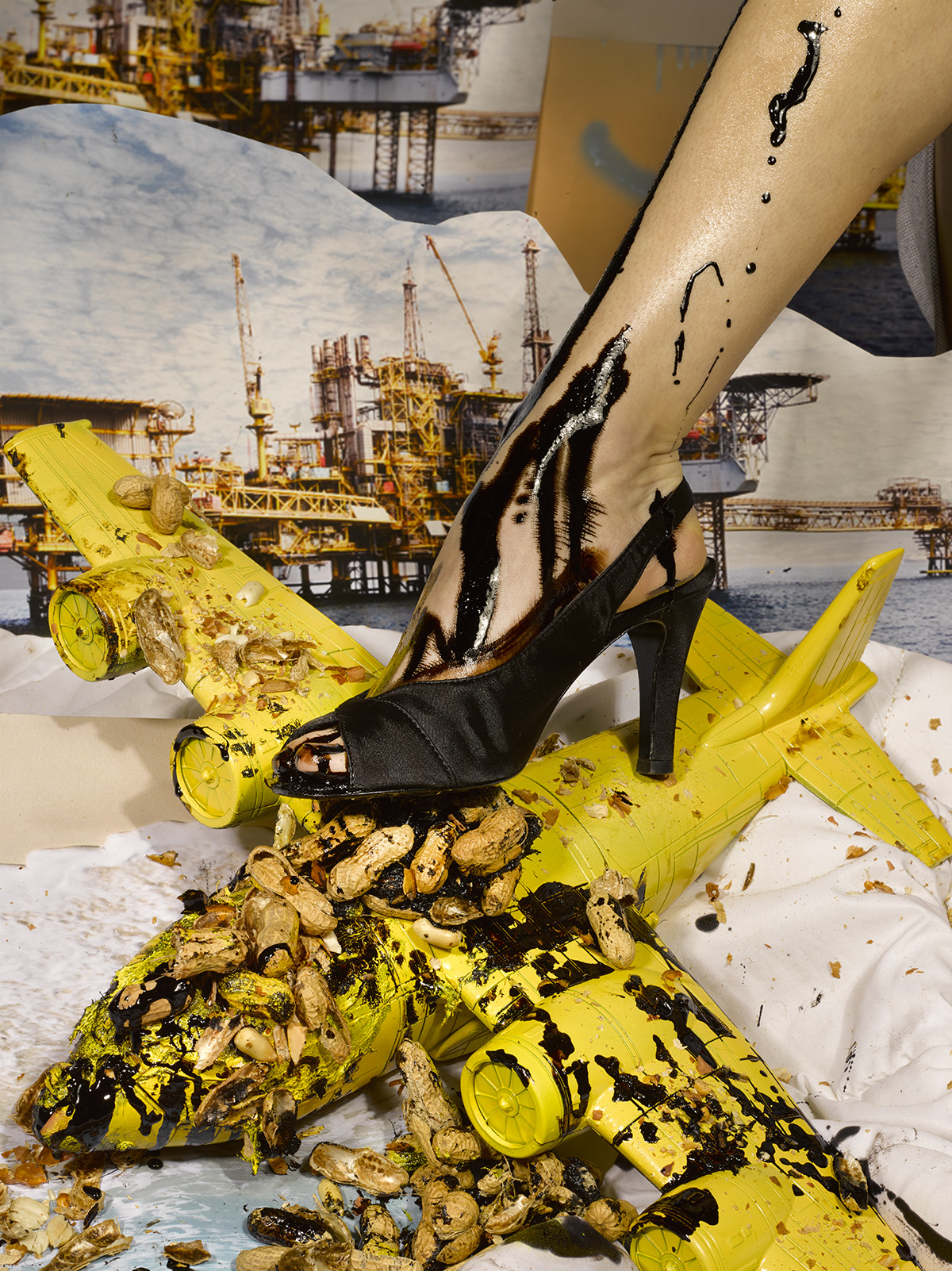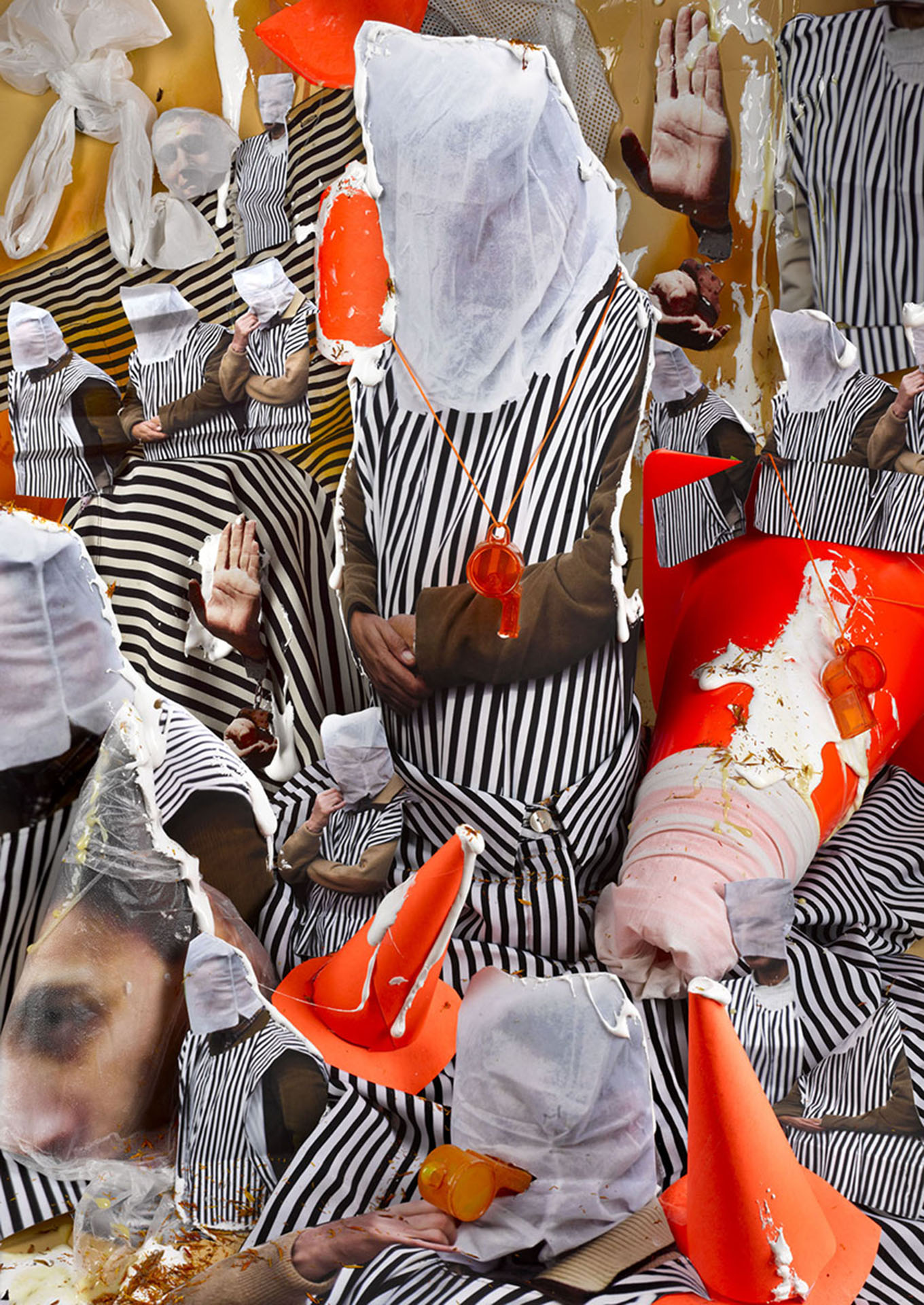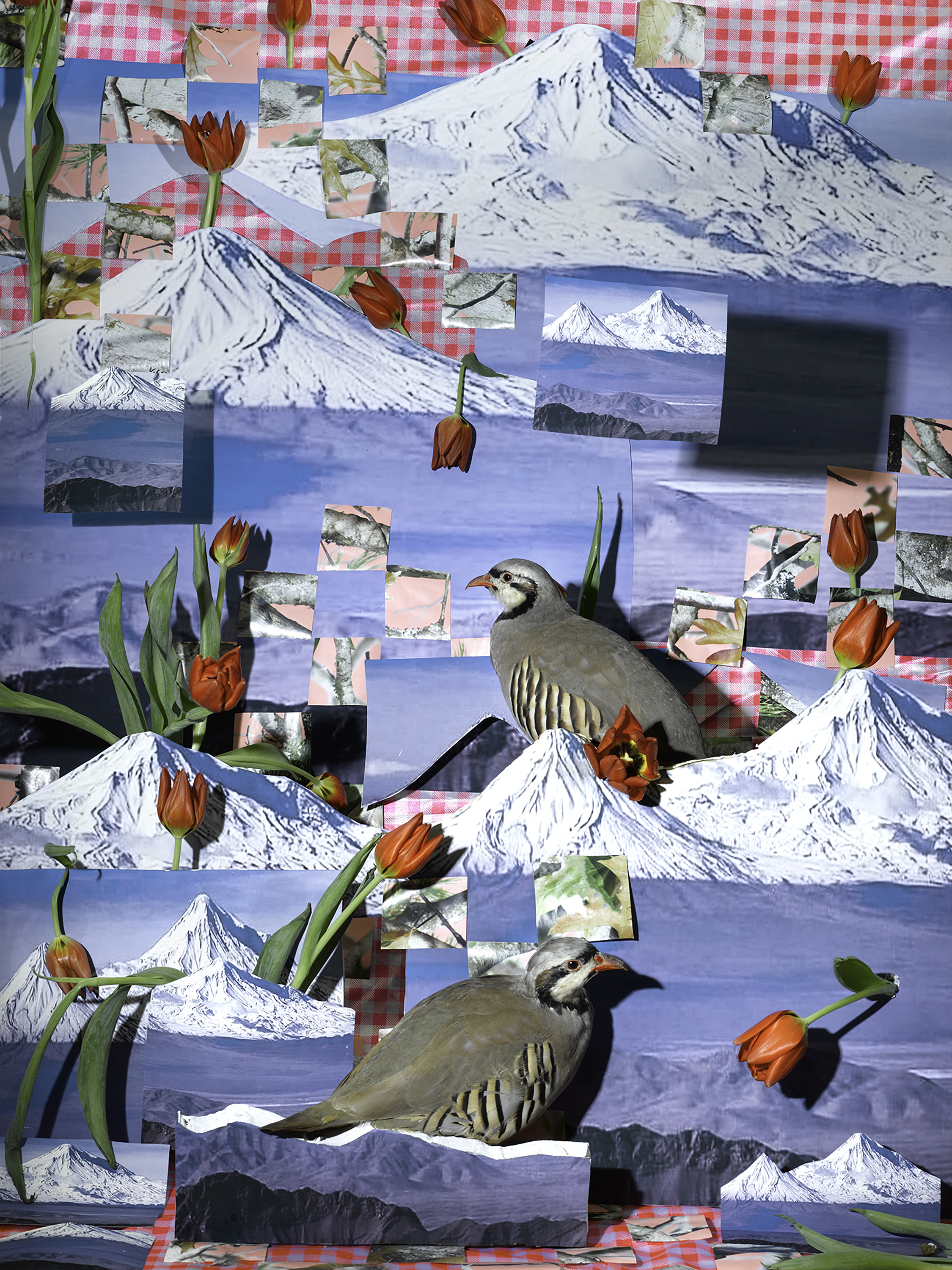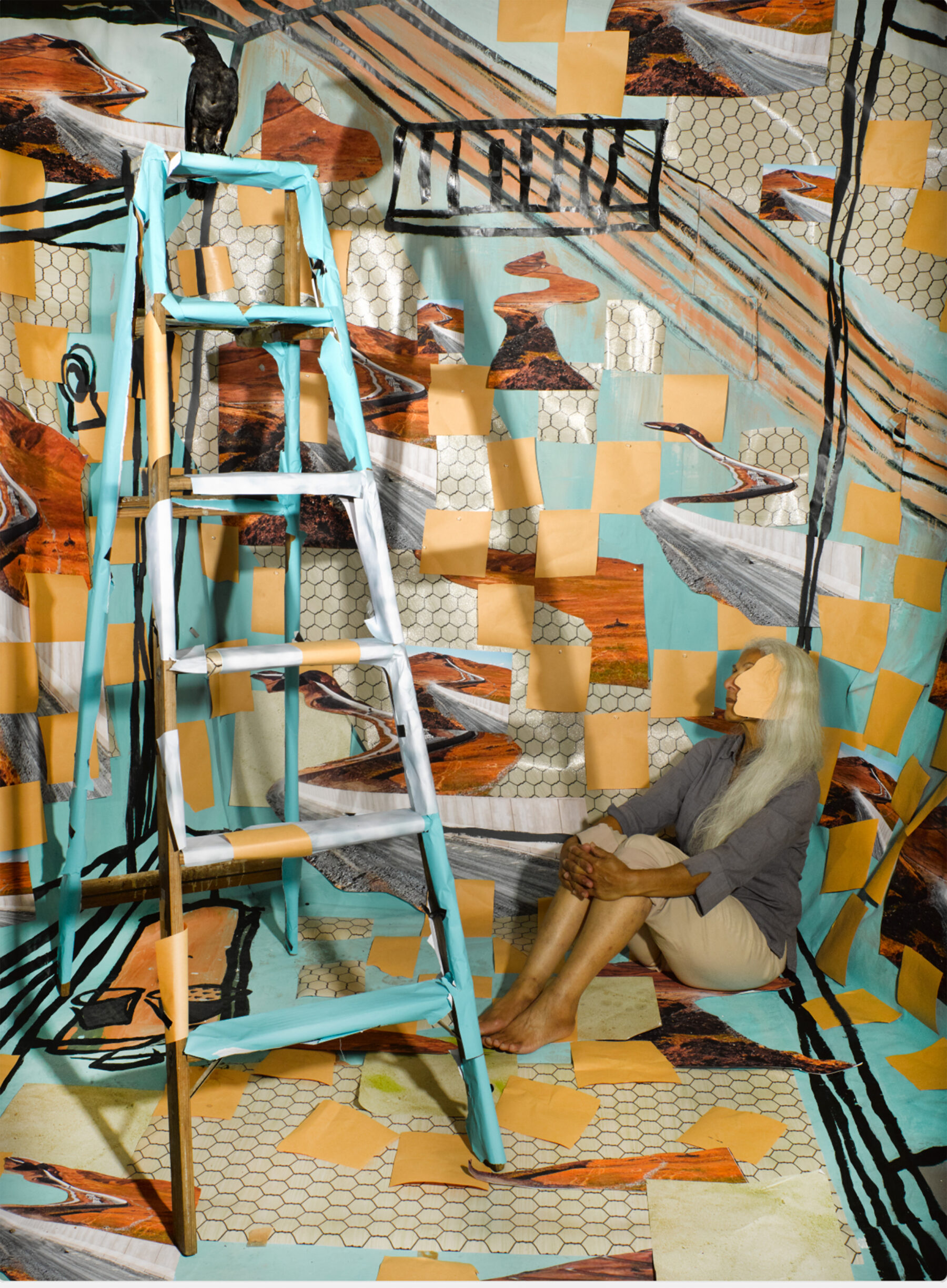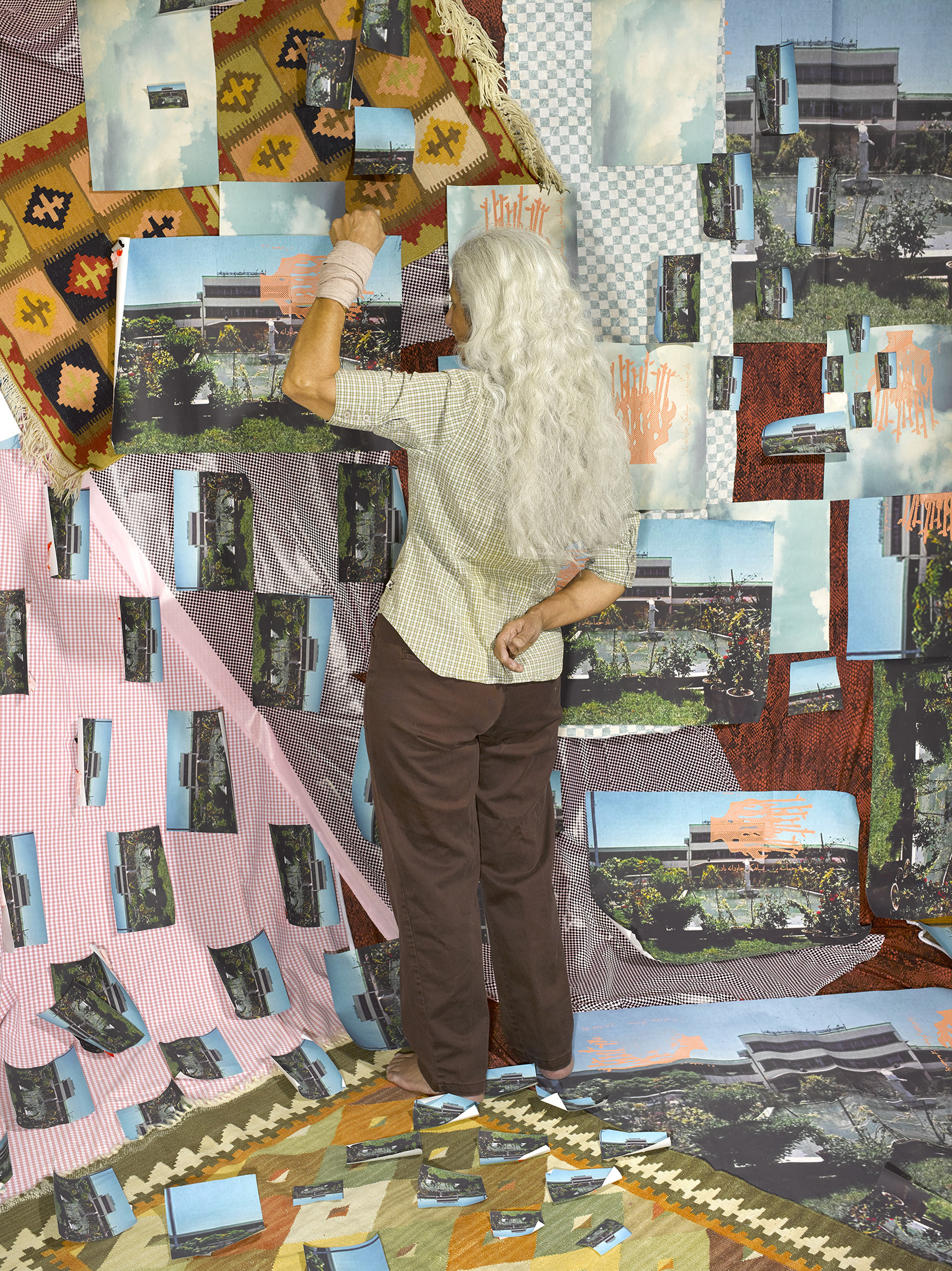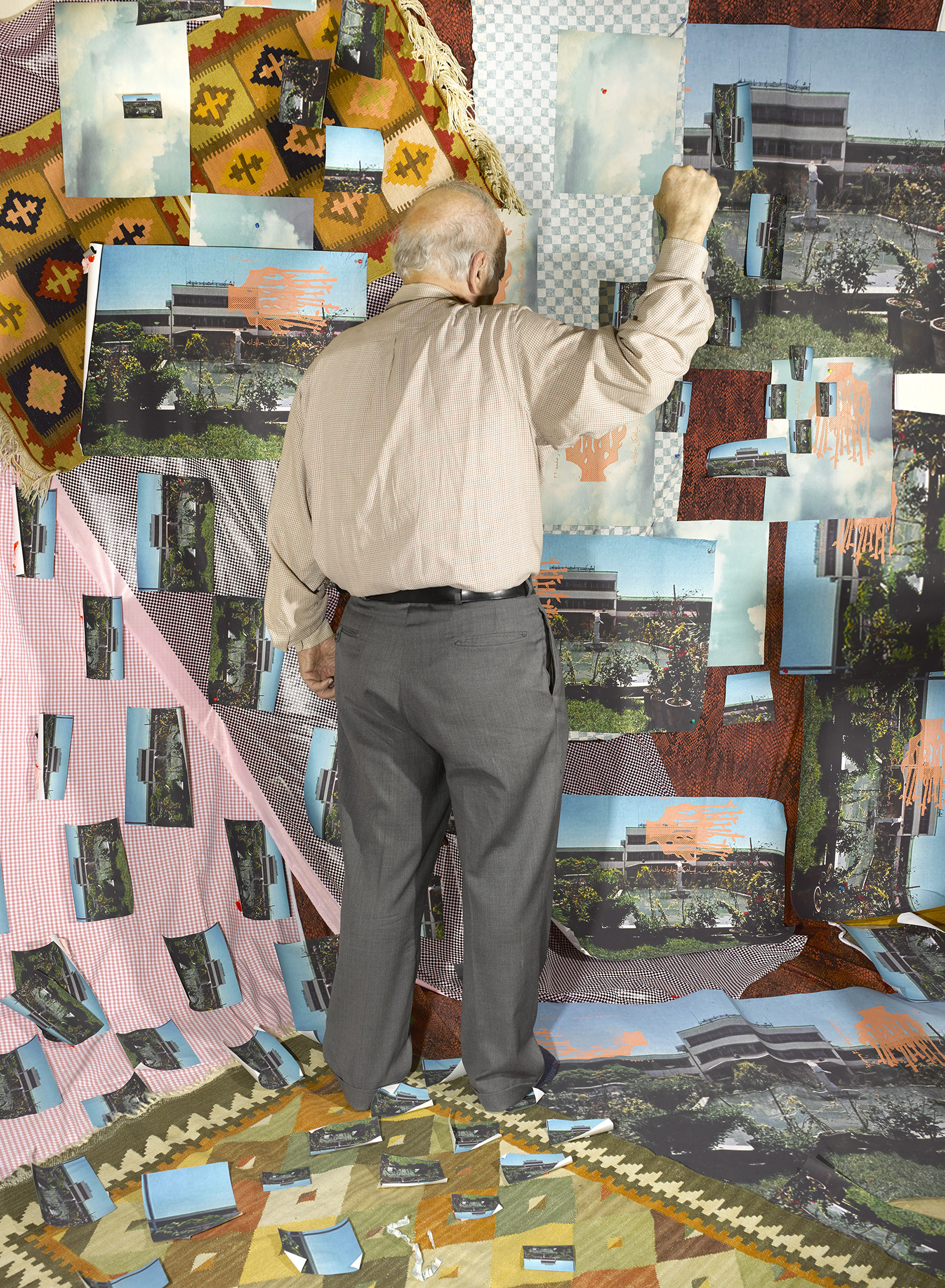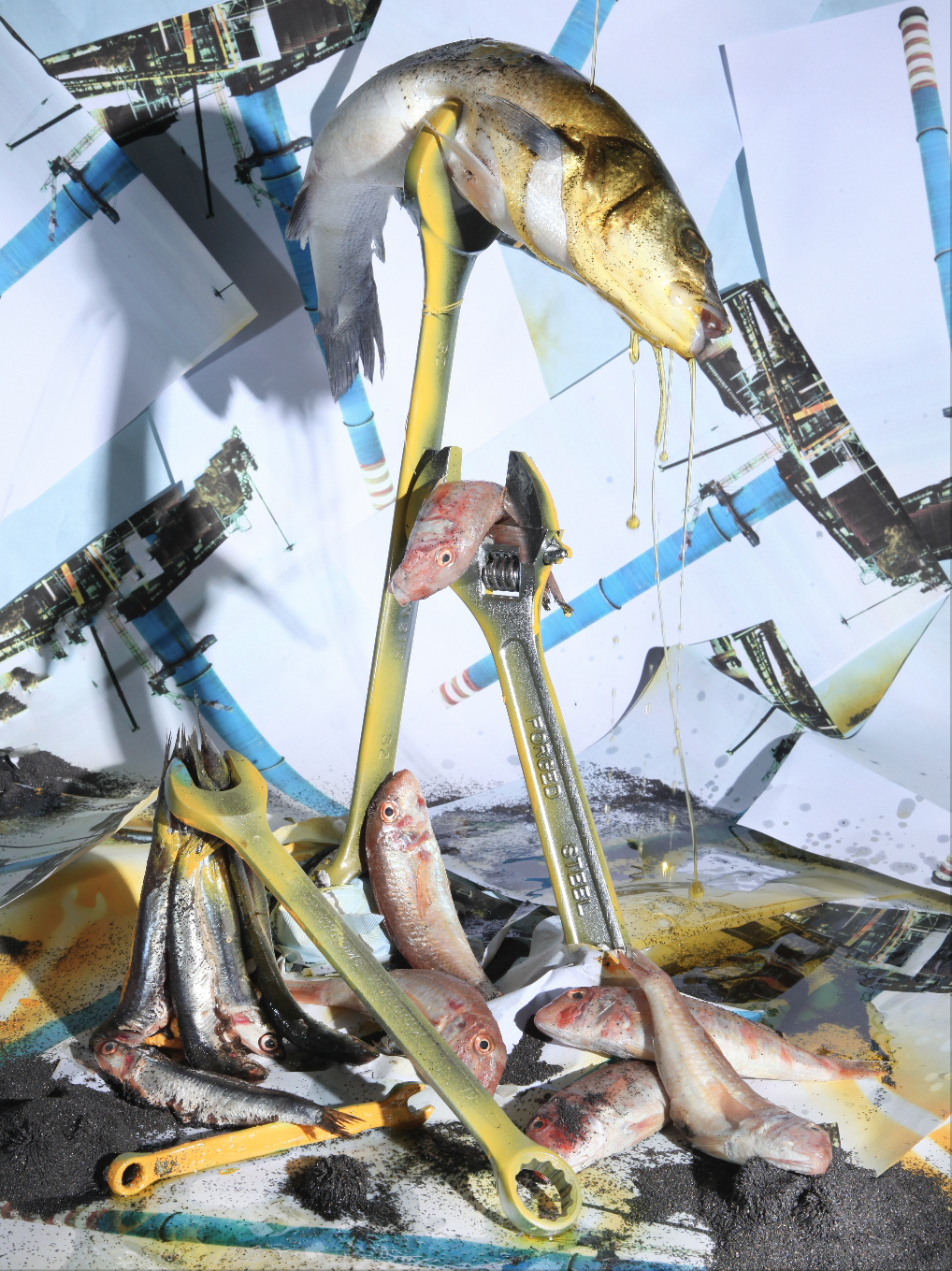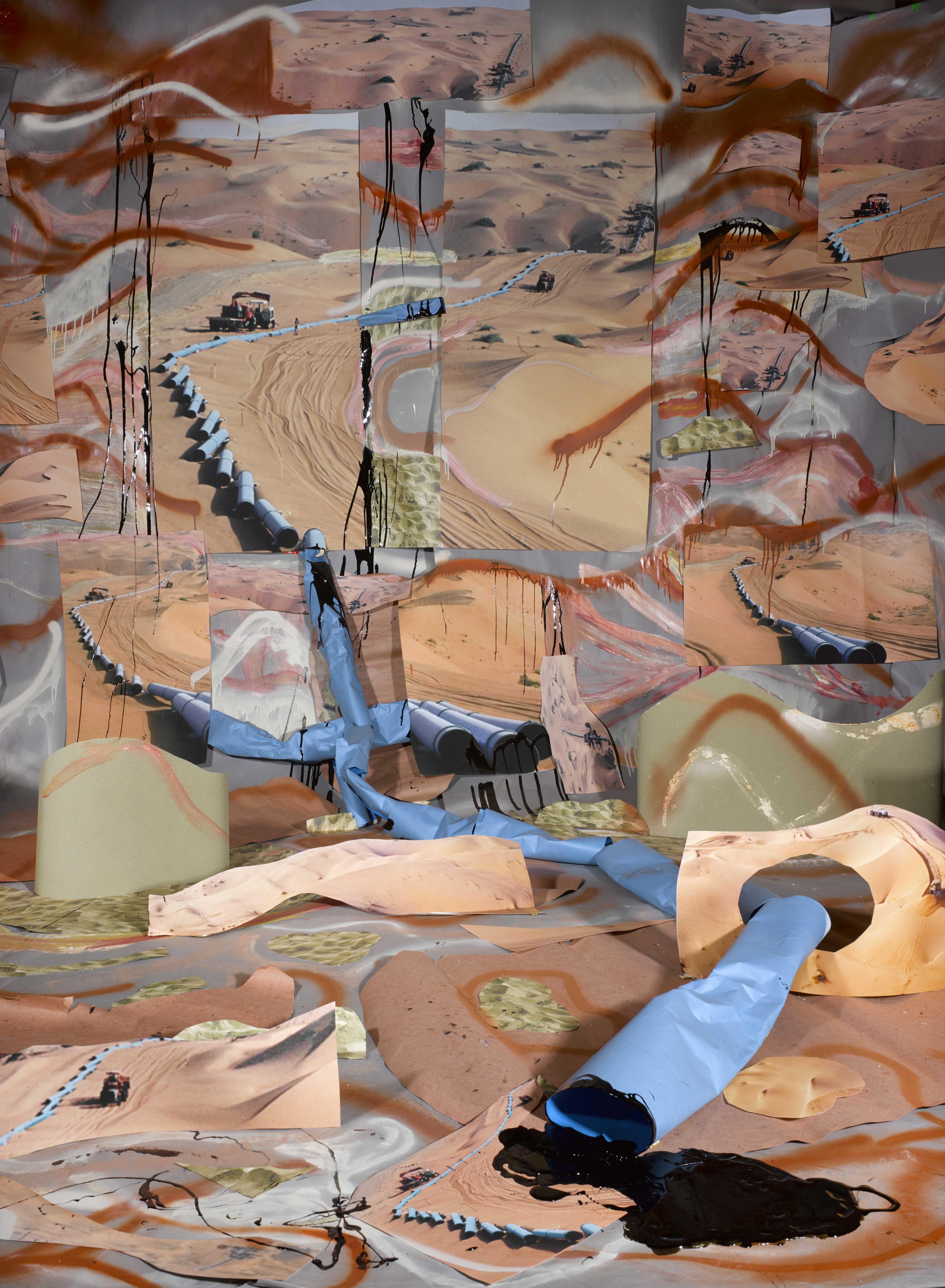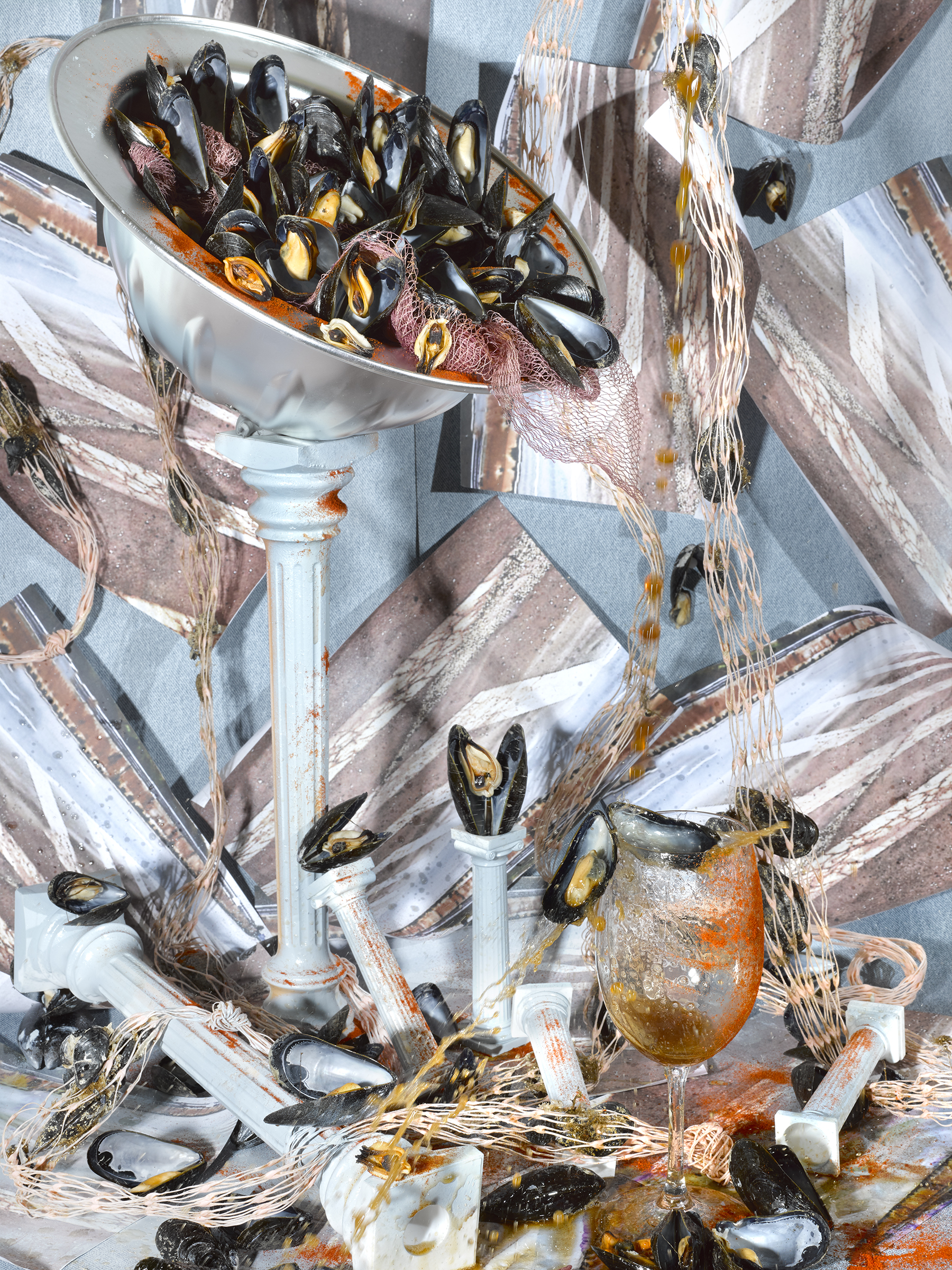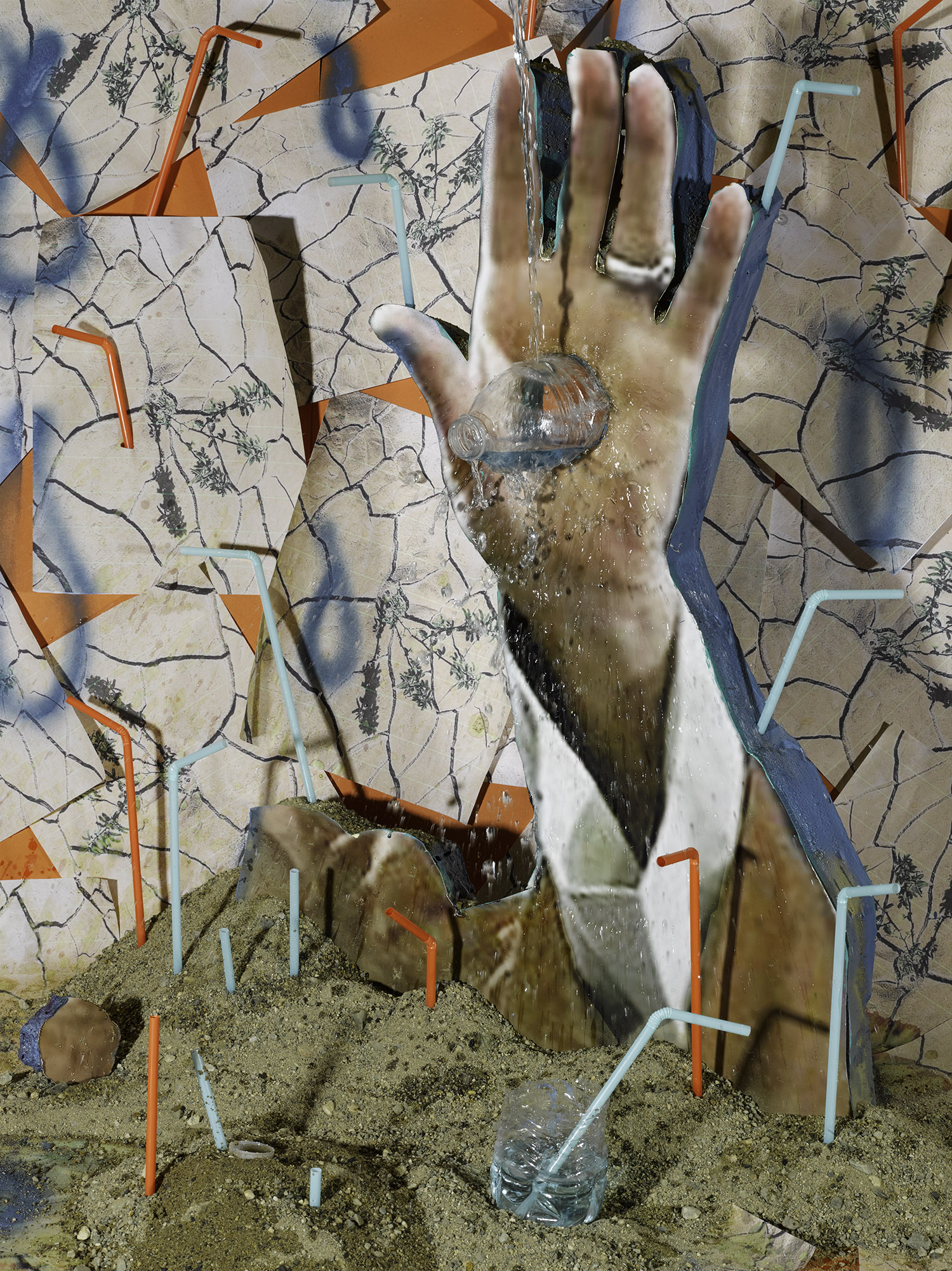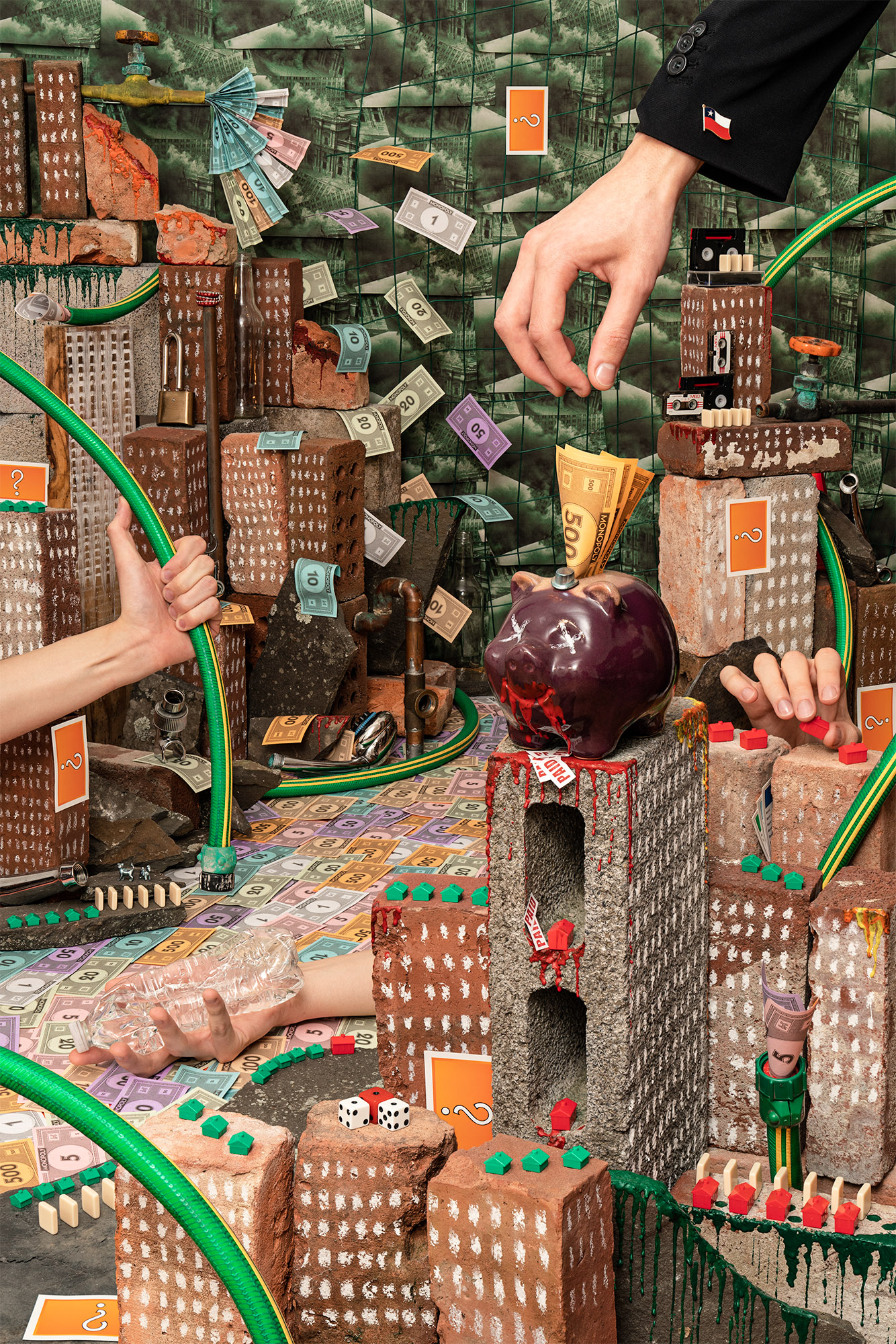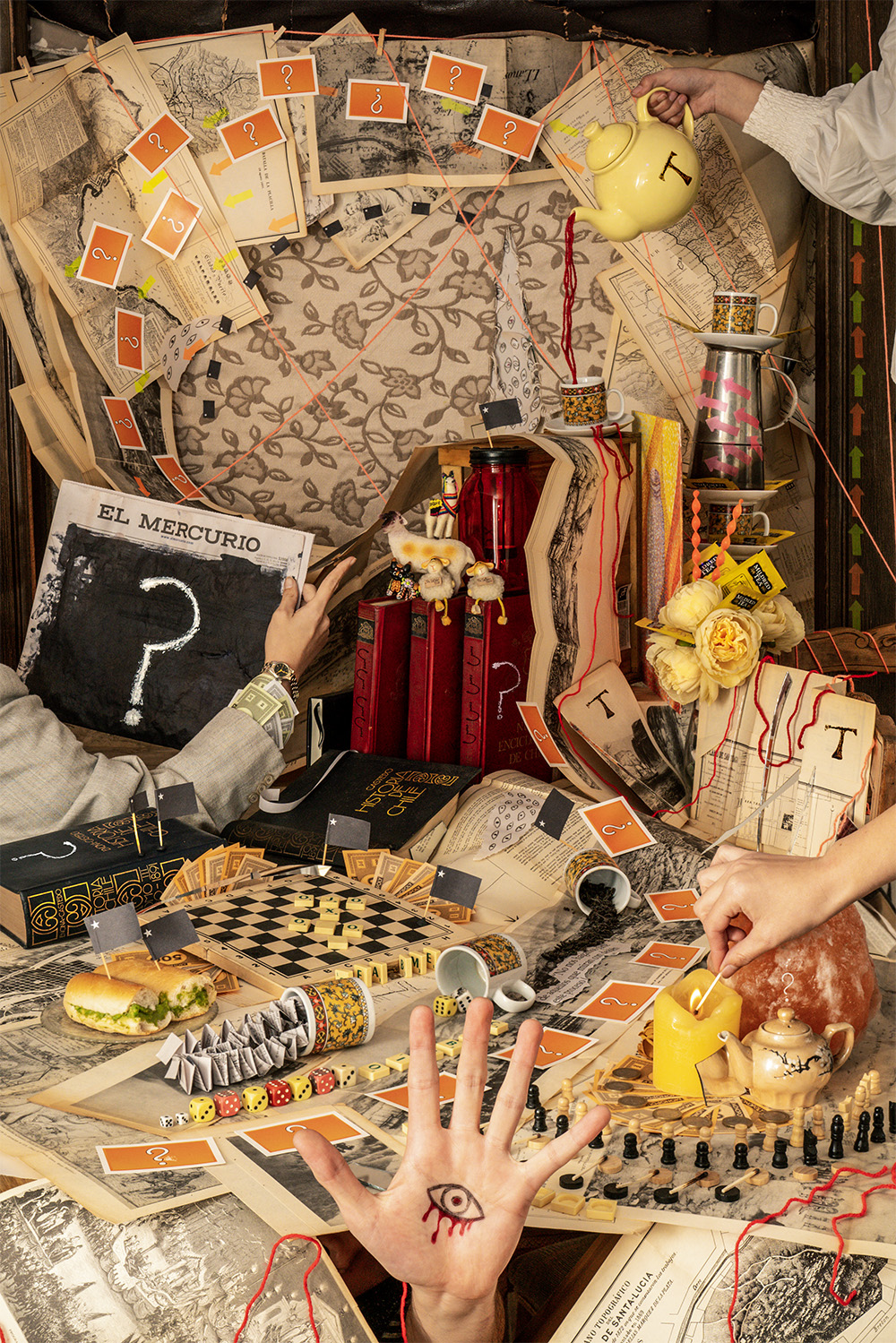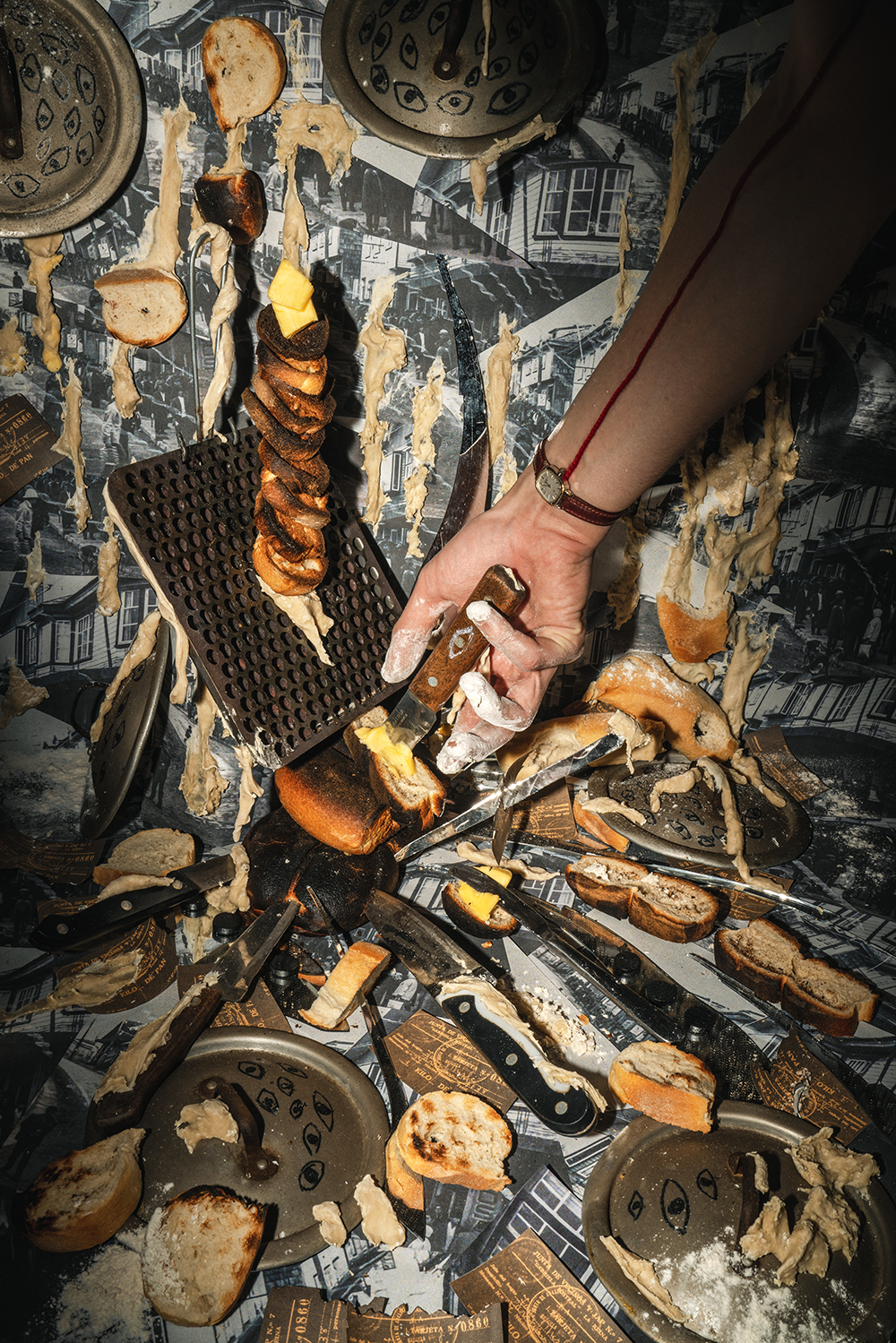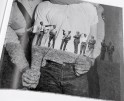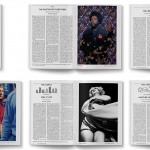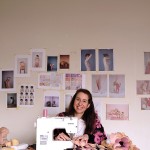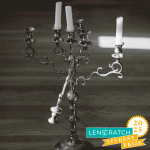Photographers on Photographers: Vicente Cayuela in Conversation with Sheida Soleimani
Striking a delicate balance between shedding light on politically challenging issues and maintaining ethical sensitivity within a historically unethical medium has been a recurring theme throughout Sheida Soleimani’s decade-spanning journey in the art world. In her meticulously crafted and, at times, cryptic still lifes and tableaux, Soleimani exposes the strains in U.S. and Middle East relations, lays bare human rights violations, confronts dark chapters of state violence and oppression, and, more recently, navigates the somber nuances of revisiting painful family histories of resistance, exodus, and persecution.
During my time as a student at Brandeis University, Sheida Soleimani’s distinct grasp of the photographic medium and its profound social and political implications revolutionized my perception of photography. This paradigm shift introduced a fresh and enduring perspective that continues to resonate within me to this very day.
In this interview for Lenscratch, I had the pleasure of learning more about her artistic evolution and the driving forces that underscore her genuine dedication to crafting thought-provoking, politically-engaged work—from her initial experimentation of her college days to the nuanced and poignant stories she shares today.
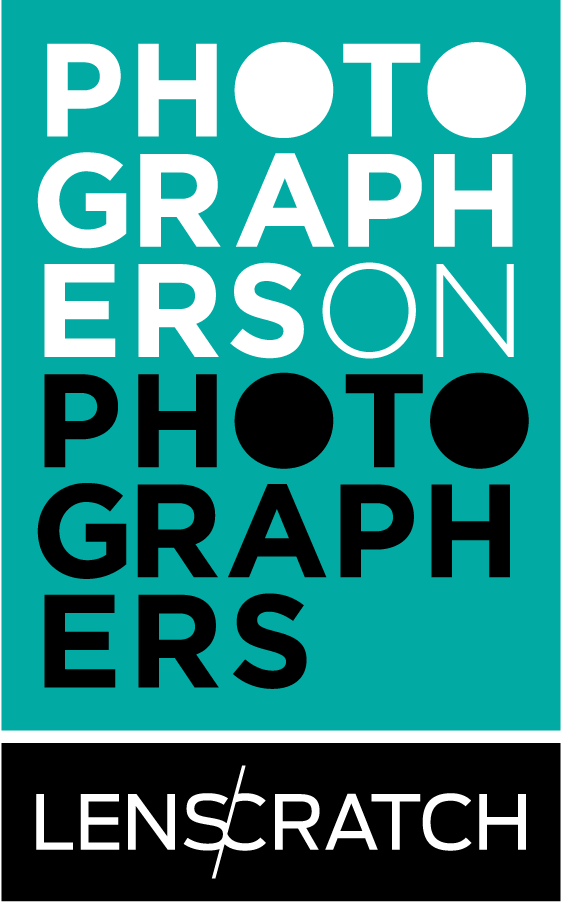 Sheida Soleimani (b. 1990) is an Iranian-American artist, educator, and activist. The daughter of political refugees who escaped Iran in the early 1980s, Soleimani makes work that excavates the histories of violence linking Iran, the United States, and the Greater Middle East. In working across form and medium—especially photography, sculpture, collage, and film—she often appropriates source images from popular/digital media and resituates them within defamiliarizing tableaux. The composition depends on the question at hand. For example, how can one do justice to survivor testimony and to the survivors themselves (To Oblivion)? What are the connections between oil, corruption, and human rights abuses among OPEC nations (Medium of Exchange)? How do nations work out reparations deals that often turn the ethics of historical injustice into playing fields for their own economic interests (Reparations Packages)? In contrast to Western news, which rarely covers these problems, Soleimani makes work that persuades spectators to address them directly and effectively. Based in Providence, Rhode Island, Soleimani is also an assistant professor of Studio Art at Brandeis University and a federally licensed wildlife rehabilitator.
Sheida Soleimani (b. 1990) is an Iranian-American artist, educator, and activist. The daughter of political refugees who escaped Iran in the early 1980s, Soleimani makes work that excavates the histories of violence linking Iran, the United States, and the Greater Middle East. In working across form and medium—especially photography, sculpture, collage, and film—she often appropriates source images from popular/digital media and resituates them within defamiliarizing tableaux. The composition depends on the question at hand. For example, how can one do justice to survivor testimony and to the survivors themselves (To Oblivion)? What are the connections between oil, corruption, and human rights abuses among OPEC nations (Medium of Exchange)? How do nations work out reparations deals that often turn the ethics of historical injustice into playing fields for their own economic interests (Reparations Packages)? In contrast to Western news, which rarely covers these problems, Soleimani makes work that persuades spectators to address them directly and effectively. Based in Providence, Rhode Island, Soleimani is also an assistant professor of Studio Art at Brandeis University and a federally licensed wildlife rehabilitator.
Follow Sheida Soleimani on Instagram: @sheidajanam
Vicente Cayuela: Sheida, it’s to nice to see you again! I have a surprise for you. How do you feel when I show you these images?
Sheida Soleimani: Oh, my God! How did you find these?! (Laughs)
VC: I’m sorry, I couldn’t resist! Knowing the profound impact your art and teaching philosophy has had on me, when I was invited to contribute to the Photographers on Photographer series, I saw it as an opportunity to learn more about your evolution as an artist, as well as learning your insights on how to navigate politically engaged work.
SS: I mean, it’s crazy because there is definitely an emotional tug and pull. I think that for most people when they see their older work, they’re like: “That’s so bad! I’ve evolved!” But this is the start of what really got me interested in building tableaus and photographic sets. When I started taking photographs, I didn’t have a nice camera or tools or anything. I had a desk lamp that was super scrappy—DIY, very cheap. That little spotlight that you see on the photograph is a flashlight. This particular photograph, (Havapeymah, 2013) was made inside of the box where I kept my DVDs in college. I’d take all of my DVDs out of this shelf compartment, put them on the floor, and then I’d use a little box or whatever to build these rooms and photograph them.
Now that I’m looking at them, I realize how the beginning of experimentation was huge for me. Before this, I was already making tableaux, photographs, and symbolic pieces, but I did them in larger spaces. This is the first time that I ever made dioramas. It felt like I was making a dollhouse for memories. I never had a dollhouse. I didn’t even have dolls. So now it feels like a weird home building/curation project that I was doing. It’s so interesting seeing it because I had totally forgotten about it. I think that this is one of the first times when I really had the most fun when I was making work. I did not know that making photographs could be this fun. (pauses) It just felt really fun and freeing.
VC: Do you still have the same type of fun now when you’re working on your art? Has that spark of enjoyment stayed with you?
SS: I haven’t lost it, thankfully. I mean, making work comes with stress now because it feels like I’m always working towards a deadline. I’m always working for something. When you’re in college, you’re working on assignment, but it’s a pretty open ended thing. I’m not in that moment of exploratory joy anymore. It’s a different type of fun that I’m having now. I’m in the fun moments where I know how to harness specific things and I know how to get the things that I want, which leaves me the ability to be able to experiment with new things now. My joy now comes from getting everything that I want right and then having the surprise of, “Oh, I didn’t know that I could do that.” That’s when I’m still finding new things.
VC: It’s always really interesting for me to unveil the symbols of your work. Who’s the little girl in this picture, Havapeymah?
SS: It’s my sister, and the tracings on the wall are drawings she did as a child when she was separated from my parents. The plane is a reference to the migration, and the writing you see is a note my parents made that says “in the spring.” It’s actually an excerpt of a letter form when my mom and dad were writing back and forth to each other when they were separated. Sitting on that bed is a doll that I made with my mom as a child. Since I wasn’t allowed to have dolls, my mom made me make my own. This one ended up being a creepy little thing. It’s interesting you’re showing me these because I’ve been finding myself remaking a lot of these photographs. I was in my phone notes just two days ago and I found a note I had made about an idea for a photograph a really long time ago. At that time, I was thinking that I could make a similar photograph with the plane, and I did.
VC: It find it interesting that you keep finding inspiration in your early work, not only when it comes to subject matter, but also the way you’ve stayed true to this unique visual language you’ve developed throughout your artistic career.
SS: When I was in undergrad I was using dead animals in my work a lot. When I got to grad school, I started making still lifes that included objects and props, but got rid of any natural elements. Neither National Anthem (2015), nor To Oblivion (2016) had birds in them. And that’s because I had this idea of being a professional artist meant that I couldn’t hold on to these sentimental ideas anymore. That I had to literally throw away all of my dead birds and bones and bugs to be able to be a ‘contemporary artist’. I had this professor that kind of traumatized me when I was an undergrad. He asked me who my favorite artist was and I said, Kiki Smith. He immediately said, “oh, she’s so 1990s. She’s not contemporary! Who’s your favorite artist making stuff now?” I was like, “Well, I like her. And that’s only 19 years ago. Isn’t that contemporary?” I think that turned everything upside down for me. It was one of those shocking moments that made me feel like I needed to look at other things. This was in 2009, Internet art had become a huge thing, and I guess that’s when things shifted and I started thinking more about media, morality, morbidity, death and all of those things.
VC: It’s fascinating to learn about where your interest in morbidity and death emerged from. In your work you frequently juxtapose the rhetorics of violence, mourning, and loss with grotesque and satirical devices. Your newest series, Ghostwriter has a very different approach. Last time we spoke, you mentioned the ethical challenges you faced when starting this body of work. I’m curious to know whether there’s also a more personal reason behind this change.
SS: Honestly, you want to know what it was? It was the pandemic. I was very privileged to have security and to have a house. But I had this huge fear of this disease that we didn’t know anything about and it was about to kill lots and lots of people. I was just convinced that my parents were going to die. I was convinced that I’d never see them again, that I’d never be able to hear them, and that they would never have the chance to tell their stories. So I was like, okay, this is it. I have to start telling their stories now because what if I don’t get the chance? The pandemic forced me to deeply delve back into their stories and also this nostalgia. But this nostalgia was different in a way that wasn’t just about reminiscing in this loving, beautiful way. It was somber. Revisiting these moments as a family has been very painful, but also so important for them—and for me, too. Working with my parents and thinking about these stories we are reenacting feels almost reparative. Now, I think that this turn is not merely sentimental, it’s more and more about caretaking. In that sense, humor doesn’t really have a place anymore in this very specific chapter of my life. I think I will always make humorous work that is tongue in cheek. I just don’t know if that humor has a place in this specific type of story.
VC: Besides posing for the camera and sharing their stories, to what degree do your parents participate collaboratively in your studio, and what has the experience of them being involved in this art-making space been like?
SS: When I told them that I wanted to go straight their stories and tell these stories, they asked, “What do you want to tell? What do you want to do?” And I said, everything. And they said, “Okay, we will do it as long as there’s a few rules.” The rules are their faces aren’t shown, and that’s really the primary one, and second, that they get to be a part of it. They get to make decisions. So these become collaborative pieces. There’s one image of my mom in her solitary confinement cell. Since I was a little kid, she would always draw pictures of what her cell would look like. She would take crayons, like when you go to a restaurant and you’re given paper tablecloth when you’re a kid and they give you crayons to draw, and she would start drawing these like really fucked up drawings on the tablecloth. One of the drawings that she would repeatedly draw was of her solitary confinement cell. In this picture, the drawing of her cell has been magnified. She’s literally sitting inside of it and kind of reenacting this moment in her life that she revisits often. When I took that picture, my mom actually posed herself. I told her what my idea was and she was like, “I don’t want to sit there. I want to sit here.” There was another photo that I didn’t use as the final photo, but she would say that when she was in her cell, she would stand up against where the window was because the light was coming into the room and she pulled her hands into the light so they would catch the warmth of the sun. And so she wanted to make another photo. She was like, “Take a photo of me holding my hands against the wall.” These were very painful times for them and there’s been a lot of emotion that comes with that, but they’ve agreed to be a part of it. I think in a weird way it’s therapeutic for all of us to be doing it together.
VC: After the success of your first solo gallery exhibition “Hotbed” in New York City in 2020, Denny Gallery is once again preparing to present another solo show featuring your work. Could you offer us some insights into what we can expect from this upcoming exhibition, Birds of Passage?
SS: This it’ll be a small exhibition with a few of the newest photographs of the series. … The first portraits of my mom and the following portrait of my dad really introduced them as the primary characters in the story. This exhibition will [introduce them] in a new way, not just as passive figures, but as active figures. The opening images of the show will be my mom and my dad in their time as freedom fighters, both of them with their solidarity fists. [In the show] they’re also engaging with their guerrilla camps, providing health care for Kurdish people that are trampled down by the government and thinking a lot about how to provide care for people that don’t have access to it. And that’s something that’s really been handed down to me. And I want to bring that tradition back as well.
VC: I’d like to know what your current self would think of twenty year old Sheida. I found one of the earliest interviews that you did and…
SS: (Laughs) I can’t believe you found all of the stuff. It’s so funny.
VC: I had to to my research! (laughs) A decade ago, 23 year-old you stated, “I hope that when people look at [my] photographs, they … assign their own ideologies to the work. It doesn’t have to be exactly how I see [these memories]. I’m really interested in seeing how people fashion these scenarios to their own senses and what they make of them though.” Does that still resonate with you?
SS: It does! You know, it’s funny because people are always looking at my work and saying there are too many symbols, if you didn’t explain it to me, I wouldn’t know what you meant. I think that’s really interesting because you don’t need to know exactly what everything means, right? It’s more important for me that there is some sort of connection early to the work where they start parsing things out. Then for me to sit there and explain, “Well, the balloons here are a reference to this, the birds mean this, and the dead coyote means this…” It’s much more important for me to let people look at the work and try to make sense of it themselves and then maybe take the breadcrumbs from what the titles might be.
VC: Mm hmm. And when it comes to Ghostwriter and its more intimate nature, did you ever think you would prefer people to understand your parents’ story in a less cryptic manner? Perhaps more directly, without the need to decipher symbolism?
SS: I think a mixture of both. I think it’s going to require storytelling. For the first time ever, I think in Ghostwriter, a lot of the exhibition is coming with clues, coming with objects and using maps that my parents had drawn, stories, letters. I think I’m also going to need writing. I think I’m going to have written a narrative and make a book to go along with it. And that’s a new move for me. I haven’t done it yet, but I’m in the process of doing it. I think I am going to hire a ghostwriter to talk to my parents because I’m ghostwriting it through photographs—and I can’t really write. So I really want to hire a ghostwriter to sit with my parents and actually write their story. It’s funny because everyone lately has been asking me about Ghostwriter and why I am making this work now. I tell them that when I was in college, I was also making work that was about my parents story. However, I feel that since I didn’t have to talk to journalists or interviewers like I do now, I got to be pretty raw with what the story was. Now I feel like I have to be more protective, and since I’m not a 20-something college student anymore, I have the language and ability to protect them.
VC: I was curious to ask you the last question because last time we spoke we talked about sensationalizing trauma for the sake of engagement, exemplified by the headline of an early interview you did, titled: “Does someone really want to buy an image of an executed woman and hang it on their home?” I’m curious to know if you have noticed any shifts in the way your work is framed?
SS: I mean, this article… (Reads) “Surrounded by the memorials of women killed in Iran… The state sanctioned misogyny, etc.” Those are all things that I care about, but the name of the article really made me feel like it all became this sort of clickbait title. When I opened up for this interview, I was 27. It was my first ever solo show in London. I was just thrilled that someone even wanted to talk to me about my work. The gallery had scheduled an interview with a magazine and it was exciting. I didn’t know what journalists were like and how they talked about things. I am always pretty open in discussion with people. I didn’t really think that I had to be careful about what I said and what I didn’t say. So I really just opened up and I told them everything. After this interview came out, I learned that I really had to be careful about what I say because it felt like journalists are cherry picking the things that make their articles read in the most interesting ways to get the most engagement. I think that’s when I stopped trusting people in the art world. I stopped trusting journalists. That’s also one of the reasons why I didn’t make the work in Ghostwriter for so long, because I didn’t trust journalists and the art world to deal with it in an ethical way.
VC: Photographers on Photographers was envisioned to foster intergenerational conversations around photographic practices. I’m grateful to be discussing this particular issue with you—being careful with how we frame the work we put out there in the world—because that’s something I’ve recently started to consciously grapple with as well. Your series Pillars of Industry and other eco-critical works like Depletion (2021) from Levers of Power motivated me to develop a new series dealing with Chile’s current environmental and water crisis, as well as its deep-rooted connections to the country’s history of neoliberalism, military rule, and state violence. However, I realized I had to unlearn and reevaluate everything I knew about my country if I wanted to even begin working on this issue. I’m curious to hear, what are your thoughts on stepping back in order to rework the foundations of our work/practice?
SS: I think it’s really important to take a step back, and to make sure to do it often. I don’t make work constantly. I think it would be irresponsible to do so. If you’re constantly a factory of churning out images and images and images, you’re doing really no service to the history that you’re thinking about. In a lot of my work, it’s really important to go into deep research. It’s important to talk to people that have either firsthand experience of those histories or have differing opinions. It’s not about just reading lots of different news sources, but about collecting oral history. Taking a step back is a really healthy and good thing, because political work needs room to grow and breathe.
VC: I often get the opposite message from a lot of artists who are like, “If you’re not making work, you’re not making work.”
SS: I think artists that are constantly making work aren’t making good work. If an artist isn’t stepping back and analyzing their own practice and how it’s evolving, then their work is probably staying in a state of stasis. Maybe they’re doing that for commercial reasons. Maybe they’re making a lot of money doing the thing that they’re doing or they’re successful painting the way that they’re painting. And if they change it, they’re not sure if they’re going to be successful anymore. And so they stay the same. But my baba has always said: “comfort equals death.”
VC: That’s incredibly powerful. While it’s been uncomfortable for me to confront the violent history of the my country, I believe it’s crucial to create art that sheds light on the lasting impact the last decades have had on Chilean society, especially as we mark 50th anniversary of the 1973 coup this year. The legacy of this dark chapter is still present in the lives of Chilean people. So every time I get anxious about addressing more political issues in my practice, I tell myself, “Why not?”
SS: Why not, right? I think it’s really important that a young artist brings these things to attention and calls people into question as to, “Hey, why did you never learn about this history? Why don’t you know about this?” I’m sure that a lot of people don’t know about what’s happening in Chile and they don’t know about the violent history that went down there. … I think it’s important for people to probe that, especially artists. If you think about the art world, most people are dealing with really inconsequential things. They want to look at images that are beautiful to put up in their homes. And the image it’s usually about something that’s very simple level. Collectors can be like, “Oh, I have this painting and it’s made by a queer artist,” but the painting could be of a flower, you know? And then the collector feels good that they supported something or someone that might be “marginally difficult” for them to deal with. The minute that we start contending with actual difficult content and difficult issues that are not as simple, that are not just about beautiful things for people to put up in their homes, that’s where I think that we have the ability to make a change in the art world.
VC: Is anxiety also a big part of your work?
SS: Oh, God, all the time. I always have anxiety about the work that I make. I feel like we can’t be responsible or good artists if we’re not feeling anxious about what we’re putting out (super healthy, I know). If you have full confidence in everything that you’re making, I don’t believe that you’re making work that’s thoughtful or critical. You know, as soon as you start tackling political content, things that have happened to other people that are less fortunate, people that have been exposed to state sanctioned violence, etc. If you’re making work about those things and then you make a piece and you’re like: “Oh my God, those pieces are so great. I feel so good about them.” I think that’s a problem because then maybe you’re not thinking sufficiently about things you should be really paying attention to: What am I making? Who does this affect? How has this issue affected people? If I am making work about this history, what is my place or what’s my role in the story? There’s a really big difference between making an aesthetically pleasing work versus being really confident about the subject matter you’re addressing.
VC: Sheida, thank you for joining me once again. Before we go, I’d like to know, what do you think are the biggest challenges the new generation of photographers is facing at the moment?
SS: I think that a lot of people don’t think that photography is important anymore because everyone has access to it. And I think that’s actually what makes photography so important: Thinking about the fact that now more than ever, it’s an egalitarian medium. Anyone could be a photographer, and that doesn’t mean that because anyone can do it, it’s not worth doing. If anyone could be a photographer, how does one find their voice? And how does one use this tool to take images? I talk about being in an image saturated economy all the time, but what does it mean to also have the power to record? Do people recognize that this is a really powerful tool that we’re constantly using and wielding?
Vicente Cayuela is a Chilean multimedia artist working primarily in research-based, staged photographic projects. Inspired by oral history, the aesthetics of picture riddle books, and political propaganda, his complex still lifes and tableaux arrangements seek to familiarize young audiences with his country’s history of political violence. His 2022 debut series “JUVENILIA” earned him an Emerging Artist Award in Visual Arts from the Saint Botolph Club Foundation, a Lenscratch Student Prize, an Atlanta Celebrates Photography Equity Scholarship, and a photography jurying position at the 2023 Alliance for Young Artists & Writers’ Scholastic Art and Writing Awards in the Massachusetts region. His work has been exhibited most notably at the Griffin Museum of Photography, Abigail Ogilvy Gallery, PhotoPlace Gallery, and published nationally and internationally in print and digital publications. A cultural worker, he has interviewed renowned artists and curators and directed several multimedia projects across various museum platforms and art publications. He is currently a content editor at Lenscratch Photography Daily and Lead Content Creator at the Griffin Museum of Photography. He holds a BA in Studio Art from Brandeis University, where he received a Deborah Josepha Cohen Memorial Award in Fine Arts and a Susan Mae Green Award for Creativity in Photography.
Follow Vicente Cayuela on Instagram: @vicente.cayuela.art
Posts on Lenscratch may not be reproduced without the permission of the Lenscratch staff and the photographer.
Recommended
-
Ricardo Miguel Hernández: When the memory turns to dust and Beyond PainNovember 28th, 2025
-
Pamela Landau Connolly: Columbus DriveNovember 26th, 2025
-
KELIY ANDERSON-STALEY: Wilderness No longer at the Edge of ThingsNovember 19th, 2025
-
Jackie Mulder: Thought TrailsNovember 18th, 2025
-
Accidental Evidence: Mike Mandel and Chantal ZakariOctober 22nd, 2025

